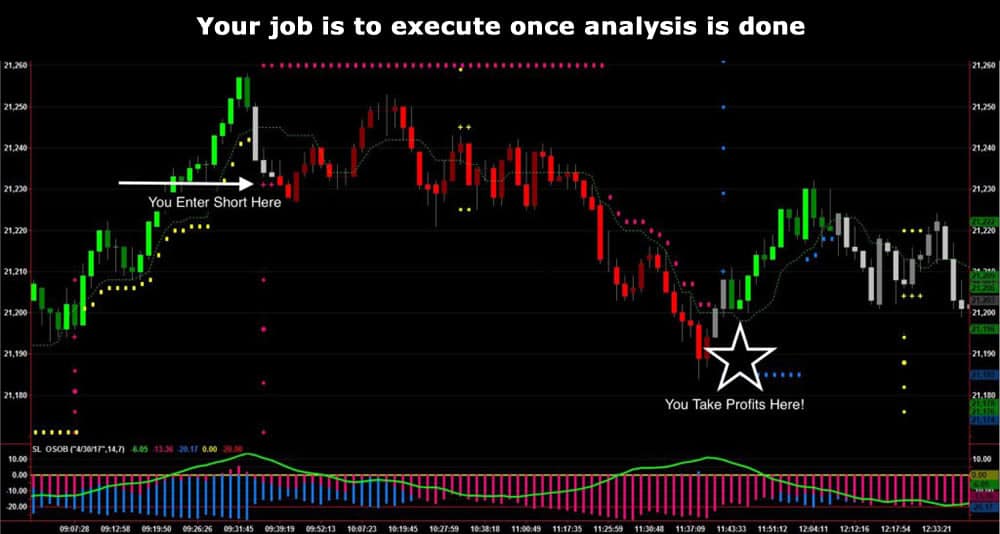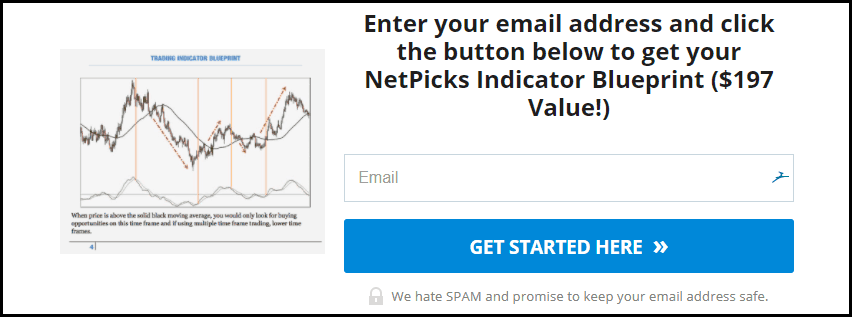- February 12, 2018
- Posted by: Mark S
- Category: Trading Article

Trading strategies are the first thing many new traders explore when deciding to enter the trading world.
While there are a few other variables that should be considered, finding a way to trade is at the the head of the line for most.
Once the strategy has been found, the new trader learns how to plan for the trading opportunity but when it comes, they don’t take the position.
Much of that comes down to not fully trusting your trading strategy and with a clear trade plan that calls you to execute your trades.
Not taking action on a trade that meets your setup variables is the difference between your assessment of the market and the trade planning aspect of the business.

Analyze Without Taking Action
The difference between assessing the market and planning the trades in your daily preparation comes down to looking for what the market might do versus planning exactly what you will do if to try to take advantage if the market does do it.
So many traders identify possible market movement and/or setups but don’t properly consider all of the details involved in the buildup to and shortly after the moment the trade will be taken.
Only accounting for market possibilities in this way instead of intently focusing on the details of how you will take the trade when the trading setup starts to take shape, demonstrates that there is no trust in the trading setup, the trading plan and possibly no intention to execute a trade at all.
Market Behavior Plus Trading Trigger
A well-planned trading strategy is not only attempting to take advantage of a certain repetitive market behavior, but also covers conditional market triggers in order for the setup to be taken.
Some common trading triggers used are:
- Looking for the high or low of a price bar to be taken out showing momentum in your desired direction
- Using the hook of a trading oscillator to trigger your entry into the trade
- Using a moving average crossover in conjunction with a short term high/low price structure break
It’s one thing to identify a trading setup but without an actual event to trigger you into the trade, you will be on the sidelines of the opportunity. Entries are important but traders should realize that they are not as important as they may believe.
Attempting to fine tune a trade entry too much ignores that there is an amount of random noise in the market.

Belief In Your Strategy – Belief In Your Setup
You may believe that by doing all your daily preparation, comprehensively considering all the trades that you might be able to take and then identifying exactly what you are looking for to validate your setups is enough.
But there has got to be a solid motivation for why you are doing this otherwise there will be no conviction at the most important moments during the trading session.
You might believe that all the work done thorough market assessment and trade planning demonstrates your intention to execute your trades. This is not always the case.
Of course, putting in all the groundwork can be indicative of a trader who wants to take their trades but for others, it can be about seeing what happens or even that it is what they think they should be doing.
Intention to execute comes from self-belief and motivation.
Belief in your strategy and what you are doing to prepare and the motivation to take your trades, creates a very different starting point for your daily prep.
Hesitation Or Jumping The Gun – Both Are Issues
If you know you are doing all the work you should be but you look back at session and see trades you have missed and/or trades you jumped the gun on, then you know your mindset is not as it should be.
If you are hesitating and missing your setups, the chances are that you are struggling to believe in your strategy, are not using a trading plan or have a problem with uncertainty. You have a fear of being wrong and/or losing.
A good remedy for this is to reassess your strategy rules and do a thorough, manual, bar-by-bar back-test.
One thing we instruct all of our Inner Circle group of traders to do is back-test the trading system they are using. We even provide strategy testing software you can use so you can crunch the numbers and see the trading edge you are using.
If you are taking trades too early in your execution, you probably have a fear of missing out.
You are good at seeing the setup develop, but are unable to wait for the appropriate moment to initiate the trade. This leaves a trader with positions where either the level of risk is higher than it would normally be or their stops are hit before the market gets to the point where the trade is no longer working.
A possible solution for this is to work out a maximum number of ticks that you are allowed to take the trade outside of your entry location. Think of this as self-imposed slippage limits that keep you from entering outside a narrow band of price differential from the primary entry.
One Trade Is Just One Trade Out Of Many
Hesitating to take your setups and jumping the gun stem from a mindset that many traders struggle to adapt – the one trade mindset.
The one trade mindset is that every single trade matters and needs to be a winner. But the truth is, you don’t know what the true probability of a single trade is. Only with a reasonable number of the same type of setup can you begin to estimate the probability of the setup.
Winners and losers come in a random distribution. Recently, a trader told me they were looking for another setup right after price had made an “out of the ordinary” price movement into large profits. The reasoning was that he didn’t want to lose the momentum.
I explained that the only thing in trading that has momentum is the market. Understanding random distribution will prevent you from thinking 1-2-3 winning trades equals a winning streak that has momentum.
The goal for the next trade you take is to execute your strategy correctly according to your trading plan, win or lose, and complete a sufficient number of trades for the edge to play out.
See The Opportunity. Trade The Opportunity.
Market assessment takes into account more than just how the market is trading – it’s also about where trades might end up appearing.
If you’re only trying to identify where your setups might show up as opposed to identifying where you will take your trades, you might well find that you either execute incorrectly or not at all.
With our work with many traders using our trading systems, our experience is that most traders who have been about for even a short time, can identify what a good opportunity looks like – but the difference between most traders and successful traders is successful traders execute their ideas.

